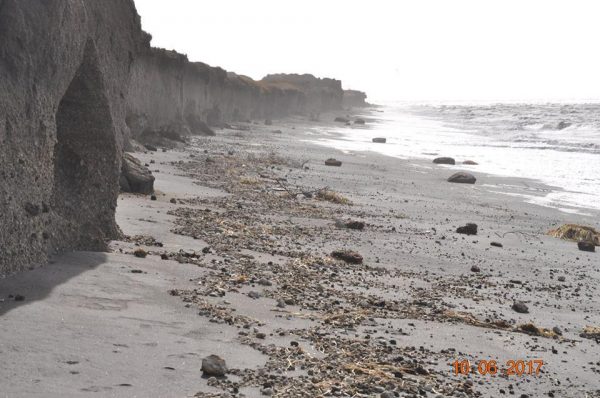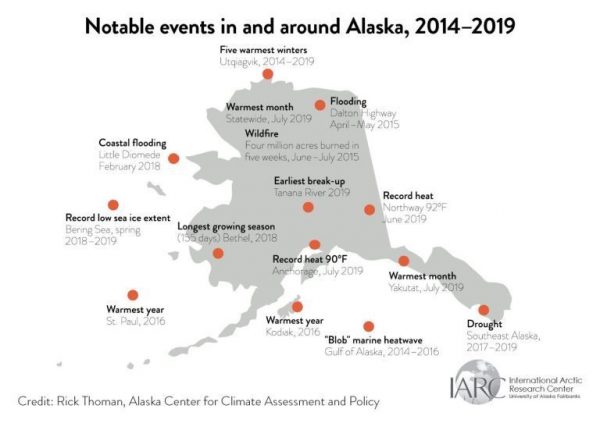
Alaska has been breaking so many climate records over the last five years, it suggests the state has crossed a threshold into increasingly rapid ecosystem changes. That’s according to a new report by Rick Thoman and John Walsh, scientists at the International Arctic Research Center at the University of Alaska Fairbanks.
“When you cross these thresholds, some of which we don’t know what they are until they happen, that you get these very rapid changes,” Thoman said in an interview on Wednesday.

The report highlights increasingly intense wildfires in the west, rapidly declining sea ice and warming winter temperatures. But there are more specific measures of climate change too. The year 2019 saw the earliest ever ice breakup on the Tanana River. Southeast rainforests have experienced multi-year drought. Tundra on the North Slope is greening, and widespread algal blooms have been showing up in warming coastal waters.
As the report points out, all of these have significant impacts on Alaska communities, as whole villages are forced to migrate due to erosion, subsistence resources become more unreliable and state agencies are forced to adapt regulations.
Thoman said the effects of climate change in northern latitudes are more apparent than in the Lower 48, a phenomenon called “Arctic amplification.”
“That is very largely, the result of changes in sea ice,” he said. “Also changes in snow cover on land over most of the high latitudes.”
It’s basically a worsening cycle. Shorter sea ice and snow seasons mean there’s less ice and snow to cool the air and the land, so the impacts of warming trends are more apparent. And Thoman says the extra water vapor in the air — a result of the warming atmosphere — acts like a greenhouse gas to trap in heat.
Even within Alaska, the effects of climate change are varied, Thoman says.
“In places like Southeast, especially southern Southeast, temperatures are responding much closer to what we’re seeing in Washington state, for instance, as opposed to on the North Slope where the where sea ice changes are so dominant, temperatures are warming almost three times the rate that they are in southern Southeast,” he said.
Thoman and Walsh’s report also talks about how Alaska communities are responding to the changes. So far many of the plans are mitigation strategies, but Thoman says that’s not really enough.
“Most of them are how do we protect our community when some bad weather event happens,” he said. “But we are seeing more and more [communities] start to address the bigger issues, understanding that this is a global problem. It’s not going to be solved by one community not doing plastic bags at the store anymore.”
The climate report used published data from NOAA and climate science researchers. Thoman says they’re hoping to make this report one in a series covering the impacts of the trends on communities and expectations for the future.




